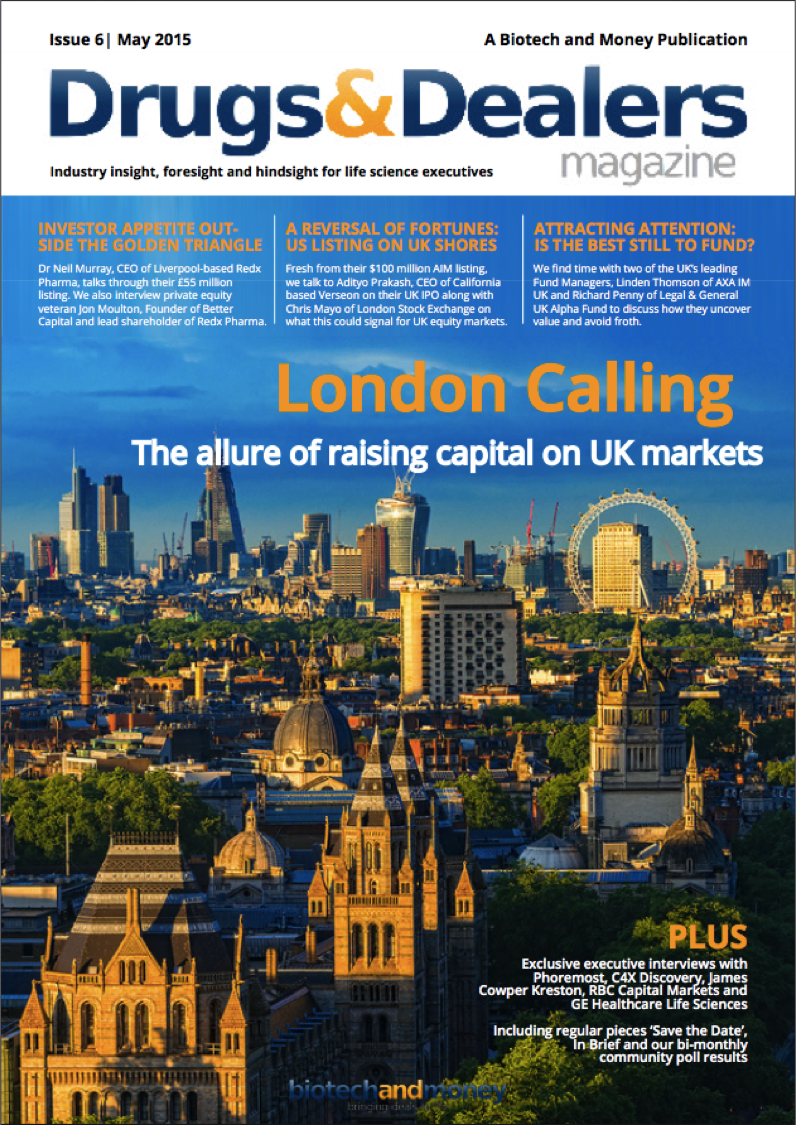R&D alliance, option and licence agreements and BMC funding
Quality sites
- Online Casinos UK
- Casino Non Aams
- Casinos Not On Gamstop
- UK Casinos Not On Gamstop
- Best UK Casinos Not On Gamstop
- Casino Sites Not On Gamstop
- Casino Sites Not On Gamstop
- Casino Sites Not On Gamstop
- Non Gamstop Casino Sites UK
- Non Gamstop Casinos
- Best Online Casino Canada
- Casino Sites Not On Gamstop
- Non Gamstop Casino UK
- UK Online Casinos Not On Gamstop
- Best Slot Sites 2025
- Casinos Not On Gamstop
- Meilleur Casino En Ligne
- Non Gamstop Casinos
- Slots Not On Gamstop
- Non Gamstop Casino
- New Online Casinos Not Registered With Gamstop
- Casino Non Aams Sicuri
- Casino Sites UK Not On Gamstop
- Casino Non Aams Italia
- Bitcoin Casino
- Meilleur Site Casino En Ligne Belgique
- Migliori Siti Scommesse Non Aams
Dr Sam Williams, Chief Executive Officer, Modern Biosciences
Sam has been CEO of Modern Biosciences since 2007, prior to which he was a top-ranked equity analyst at Lehman Brothers. He is a non-executive director of C4X Discovery Holdings plc, a board member of the UK BioIndustry Association (BIA) and oversees IP Group plc’s biotech portfolio.
On the 27th November, Modern Biosciences (MBS) announced a £176 million option and licencing deal with Janssen Biotech, a division of Johnson and Johnson, relating to its novel rheumatoid arthritis (RA) drugs. This was a watershed moment for MBS in terms of securing the funding required to take its lead programme into the clinic as well as finding the right collaborator to take it to market. RA is a severe, crippling inflammatory disease which causes progressive joint and bone erosion and eventual disability.
B&M: Sam, are you able to give me some background to origins of your company and your company elevator pitch. What are the main activities that Modern Biosciences carries out?
SW: MBS is a two-man company that runs a virtual model of drug development, with all experimental work outsourced to contractors. Our programmes largely originate from academia, such as the programme that is the subject of the collaboration we just announced with Johnson & Johnson Innovation and Janssen. In recent years, this programme has been our main focus, though we continuously review new IP from academia. The compounds work by reducing inflammation, much as the current crop of branded drugs do (such as the biologic anti-TNFs like Enbrel and Humira) but they also have a directly protective effect on bone, which is unique. Therefore, whereas the current drugs can prevent further damage to the joints, ours may be able to reverse damage. This would have a profound impact in RA, where joint destruction is one of the most debilitating facets of the disease and over 70% of patients suffer from some degree of osteoporosis.
B&M: What is the market potential of these compounds in terms of the wider RA market?
SW: As always, it’s hard to predict, but if you look at Humira, for example, it’s doing about $10bn per annum. A small-molecule, once-daily pill with a superior impact on bone might be expected to have a decent share of those sales. However, there’s a long way to go and true market potential depends on what the late-stage clinical data look like. At the pre-clinical stage, you’re always talking in theoretical, ‘what-if’, terms. All we can really say is that, at the moment, we have some very interesting signs.
B&M: If we come onto the R&D alliance and global option and licence agreement with Janssen Biotech Inc. First of all congratulations. Could you briefly explain how this arrangement came about and the key terms of this deal?
SW: Thanks. We met the people from the JNJ Innovation Centre in 2013. At that stage, we didn’t know the precise molecular target for our compounds and, therefore, the
programme didn’t represent the easiest sell when it came to talking to pharma. However, in the JNJ team, we found a group of people who were driven by the science rather than a BD box-ticking process. We spent over a year getting familiar with each other until they decided they were comfortable with the programme and we got comfortable that they were the right people to help us take it forward. We couldn’t ask for a better partner than Janssen/JNJ, given the company’s proven expertise in inflammation and rheumatology. Under the terms of the exclusive agreement, MBS will receive an up-front payment and is eligible to receive development, regulatory and commercialisation milestone payments up to a potential total of £176 million. In addition, MBS will receive royalties on future sales of any products that may result. I can’t go into any more detail on the terms of the deal beyond what’s in the press release, but it is a good deal for a pre-clinical programme.
B&M: Could you sum up what were the success factors to securing this R&D alliance and global option and licence agreement? What were Janssen looking for in this arrangement? What did they need to see from you and vice-versa?
SW: I think I’ve covered that above but I think it helped that the JNJ Innovation Centre had been set up to look for exactly this sort of opportunity i.e. relatively early with innovative and, possibly, slightly unusual science.
B&M: What lessons have been learned from this process?
SW: When you think you’re going to close a deal in 6 months, even with the best intentions in the world, add another 3 and then double the overall time for good measure! But seriously, if I learned anything, it is to get your data lined up. We meet a lot of companies who claim they have a candidate drug when in fact they have nothing like that and possibly more a lead or even a hit. Pharma has high standards, particularly a company like JNJ, and we learned to always aim higher when trying to engage these people.
B&M: What are your upcoming critical milestones or timescales in relation to the Janssen collaboration?
SW: The acceptance of our Phase 1 filing next year and proof of acceptable safety and pharmacokinetics in man. Some people may think that’s a trivial thing, but it’s a major milestone given the high clinical failure rate of drugs based on tolerability alone.
B&M: What are the challenges that you foresee to achieving the milestones or goals that you want to see in immediate the future?
SW: We are going after a new target, so there’s always additional risk associated with a programme like ours compared to, say, the 7th or 8th TNF inhibitor.
B&M: You also recently secured a £2.4m grant from Innovate UK’s Biomedical Catalyst, the 2nd of such awards. Are you able to briefly summarise where you see this recent award being allocated?
SW: The award to MBS will help fund the clinical development of a candidate molecule through Phase 1 clinical studies and provide evidence from patients for the drug’s efficacy and safety. It will make a vital contribution to the Phase 1 programme which remains very much in our hands. This is our second BMC award for this programme and we are incredibly grateful to Innovate UK, the government’s innovation agency. Our first Biomedical Catalyst award allowed us to take our rheumatoid arthritis programme to a point at which we can enter clinical studies, and this further award will now enable us to demonstrate the utility of the drugs in patients. Without this funding, our programme would never have progressed to this critical stage. Without the BMC, the programme would never have got this far.
B&M: What does the future look like for Modern Biosciences? What can we expect to see beyond the existing compounds? How does IP Group play a role in this?
SW: IP Group has been our backer since inception, both financially and in terms of back-office and strategic support, and so has been critical to us getting here. We are grateful for that. We are now able to look more seriously at licencing opportunities from a range of sources, not only because we have the additional resources, but we now have a track record too. After all, I’m not aware of many other academic projects that have been taken on by a single-asset development company to the point of clinical studies and a partnership deal with pharma, at least not in the UK. So we aim to expand the effort and build from this one out.
B&M: To finish on, as the CEO what really excites you about the potential of Modern Biosciences and its approach to drug development?
SW: The fact that we were able to do what we did in RA with one full-time employee working from a desk in London on a shoestring budget is very satisfying. When people from
industry see what we’ve done, they’re astounded. That’s largely down to our CSO, Lisa Patel, who I don’t think has had a holiday in four years. However, we’re not getting carried away – this is just the first step in getting a product into the clinic and eventually, we hope, onto the market and into patients. The true mark of success will be if a drug from this programme ends up benefitting patients and we’ve a long way to go yet.
Sam’s interview was recently featured in January’s Drugs & Dealers Magazine, the official online publication of Biotech and Money. Providing industry insight, foresight and hindsight for Life Science executives. Download the full Magazine here.




Leave a comment